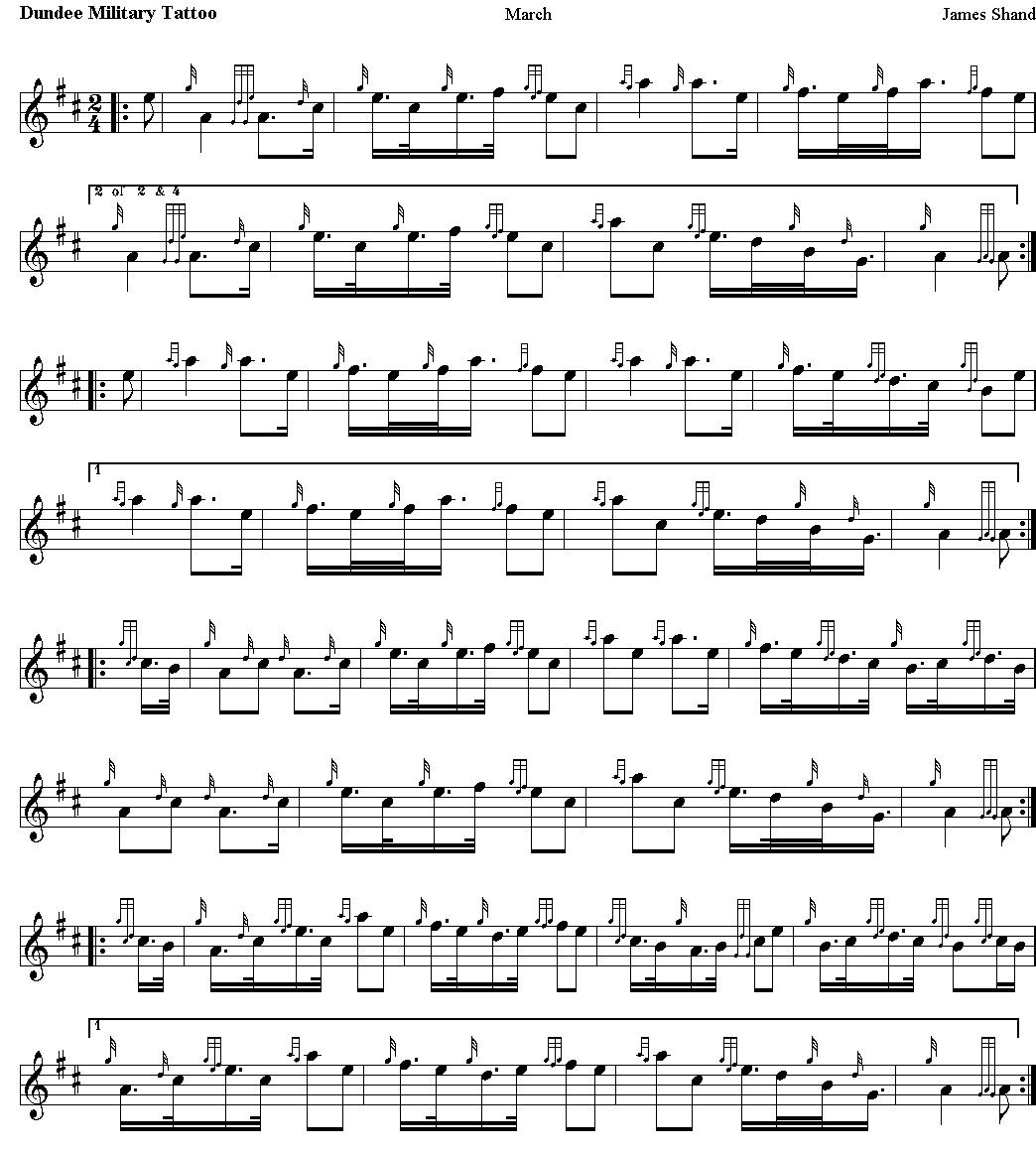|
Dundee Military
Tattoo was composed by James "Jimmy" Shand. James Shand was
born in East Wemyss in Fife, Scotland, son of a farm ploughman
turned coal miner and one of nine children. The family soon
moved to the burgh of Auchtermuchty. The town now boasts a
larger than life-sized sculpture of Shand. His father was a
skilled melodeon player. Jimmy started with the mouth organ and
soon played the fiddle. At the age of 14 he had to leave school
and go down the mines. He played at social events and
competitions. His enthusiasm for motor-bikes turned into an
advantage when he played for events all round Fife. In 1926, he
did benefit gigs for striking miners and was consequently
prevented from returning to colliery work. One day Shand and a
friend were admiring the instruments in the window of a music
shop in Dundee. His friend said: "It wouldn't cost you to try
one," so Shand walked in and strapped on an accordion. The
owner, Charles Forbes, heard Shand play and immediately offered
him a job as travelling salesman and debt-collector. He soon
acquired a van and drove all over the north of Scotland.
He died in December of
2000. More than 330 compositions are credited to Jimmy Shand. He
recorded more tracks than the Beatles and Elvis Presley
combined.
A
military tattoo,
is a military drum performance. It dates from the seventeenth
century when the
British Army
were fighting in the
Low Countries (Belgium
and The
Netherlands).
Drummers
from the
garrison were sent out into the towns at 21:30 hrs (9:30PM) each
evening to
inform the soldiers that it was time to return to
barracks.
The process was
known as Doe den
tap toe and
encouraged the inn keepers to "turn off the taps", stop
serving beer and
send the soldiers home
for the night. The drummers continued to play
until the curfew at
22:00 hrs (10:00PM).
Over the
years, the process became more of a show and often included the
playing of
the first post at 21:30
hrs and the last post at 22:00. Bands
and displays were included and
shows were often
conducted by floodlight or searchlight. Tattoos were commonplace
in the late
1800s with most military and garrison towns putting on some kind
of show or
entertainment during the summer months. Between the
First World War
and the Second
World War
elaborate tattoos were held in many towns with the largest in
Aldershot.
One of the
best known Tattoos is held on the Esplanade in front of
Edinburgh Castle
each August and
forms the centerpiece of the annual
Edinburgh
Festival. The
Edinburgh
Military Tattoo
was first staged in 1950; it combines the traditional sounds of
the Pipes and
Drums with the modern aspects of the armed forces. Another well
known Tattoo was the
Royal Tournament
which was held annually in London
from 1880 to 1999. The largest
tattoo in the United
States is the Virginia International Tattoo, held every year in
Norfolk,
Virginia. Over 850 performers play traditional music and many
international acts join
every branch of the
Armed Forces for a spectacular
show.

|



